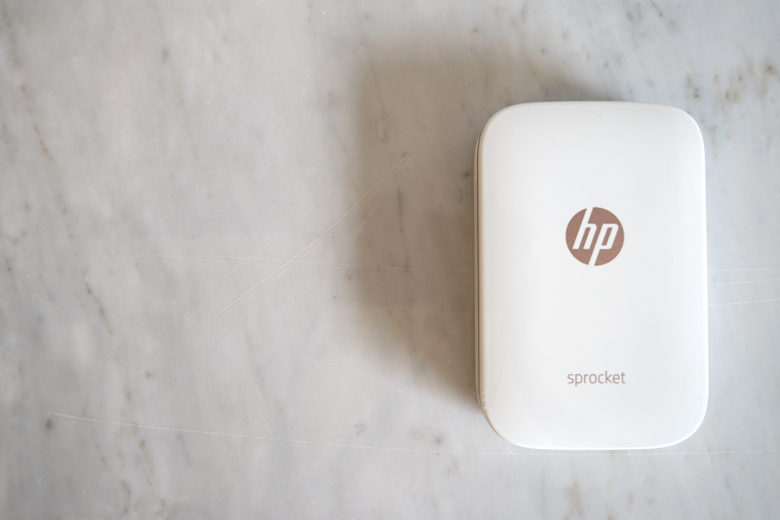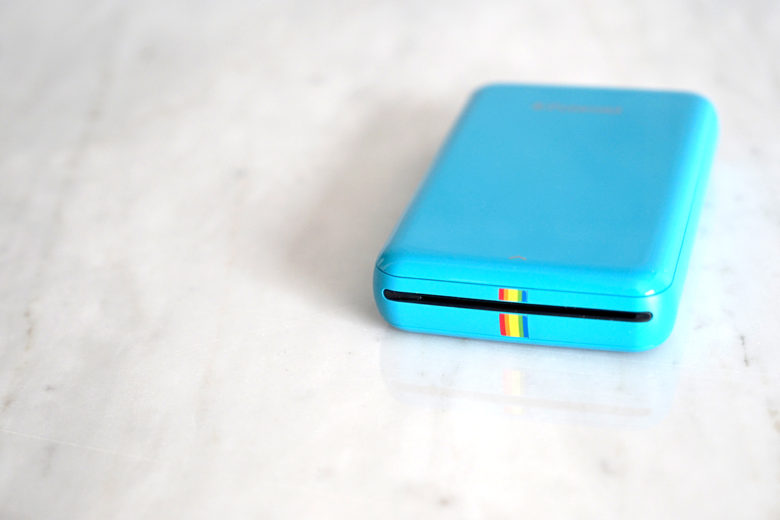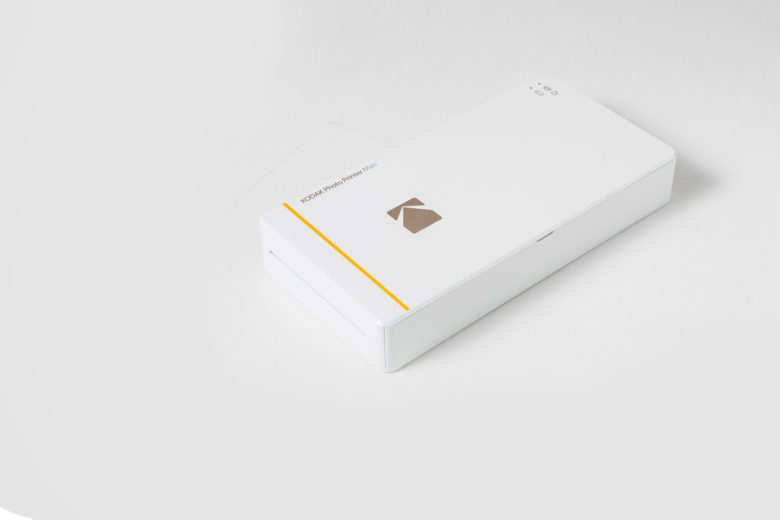I love the instant gratification of Smartphone photos. Especially for someone who grew up with analog cameras and film, it’s a thrill to grab that once-in-a-lifetime shot of a kid’s first cannonball, or a Jenny bounding around at the dog park, or those chocolate macarons that were almost too pretty to eat. But digital shots have a way of staying… digital. They fill up my phone or go into Cloud storage. They can even accidentally get deleted. And they’re just not the same as pictures you can hold in your hand, put on your refrigerator, or tuck in your wallet. Last month we did a smackdown of the new crop of Instant Cameras, which spit out a Polaroid-style print when you take a picture. But now we’re testing Instant Photo printers which allow for the best of both worlds— the convenience of using your (superior) Smartphone camera, but the thrill of creating a small print for posterity.
I tested and compared four of the most popular instant photo printers on the market. Here are the results, in a snap.
HP Sprocket
In white and rose gold or in black and silver, the stylish HP Sprocket is sleek. It’s about the size and shape of an original iPod, and has a secret way to load the paper: slide the top back, and it pops open (clever and seamless). To use it, you’ll need to download the app, turn on the printer, and connect to Bluetooth. It takes ZINK (zero ink) photo paper, so prints come out fully exposed and ready to touch. The “edit” function allows basic cropping, filters, frames, text, and a small array of stickers. The stickers can be scaled and tilted, and have a number of font options. When I tried cropping, but the results were pixellated— it’s not a recommended option.
Annoyingly, after printing two shots, the printer lost connection to my iPhone, and this continued to happen frequently. I also found that once I restarted the printer, I needed to restart the app and manually reconnect the printer and the phone (again). Sigh.
I will say that the print quality is impressive, with very good detail. Photos appear darker than what you see on your phone, though you can brighten them in the Edit screen, but you won’t know you need to until you’ve already wasted a print.
Minuses aside, I was really happy with the little 2 x 3”, frameless images I got (you can add a border if you choose). The photo paper, which costs fifty cents a sheet, can be peeled and used as stickers. I did notice that the images I didn’t peel became curled after a day or two.
Instax SHARE SP-2
The Instax SHARE SP-2 is about the size of a 8-track (for those born later than I, look it up!). It’s a bit bulky and styled along the lines of a futuristic milk carton with a touch of either Stormtrooper-ish silver or Snoop Dogg-ish gold, your choice. In contrast with its competitors, it works with Wi-Fi, not Bluetooth. Also, it takes Instax Mini film, which is similar to old Polaroid film: it requires a few minutes to develop.
To get it going, you’ll have to find the printer in your Wi-Fi menu, and connect. Then, download the app, and connect to the printer through the app. But there’s a caveat: some phones that meet SHARE’s criteria still won’t work with it. I thought that might be my case when no matter what I did, I couldn’t get my Wi-Fi to find the printer. It took me two hours to figure out that the battery had popped out of its slot, and needed a full recharge before my phone’s Wi-Fi would locate it. Once I did start printing, however, I found that after a few minutes, the printer shuts off and I need to connect to its Wi-Fi all over again.
My first shots looked blown out, and I realized the automatic “Fujifilm Intelligence Filter” was on. I turned it off through the app’s settings, and my images became marginally better. Every picture, however, seemed to be in soft focus. You can add text, borders, and collage layouts. One big plus: zooming in through Edit mode doesn’t destroy resolution as it did with the Sprocket.
Prints will run you about 75 cents apiece.
Polaroid ZIP
Of all the printers I tested, the Polaroid ZIP may be the most fashionable. It comes in glossy turquoise, coral, white or black, all with Polaroid’s spiffy rainbow stripe, and calls simpler times mind. It’s also satisfyingly tiny. As with the HP Sprocket, the lid slides back to open so you can fill the ZIP with ink-free ZINK photo paper. Annoyingly, the whole lid then pops off, and it’s a little tricky to put it back on. It easily connected to my Bluetooth, and loading the app was a breeze.
It comes with a number of printing options. “Quick Print” allows you to pick an image from your phone and instantly print it without jumping through hoops. Editing is more involved, and the app offers more options than any other mini printer app I tested. However, the machine seems to want to landscape everything, so I had to be sure to rotate images before printing (I ruined some shots by forgetting). While I was figuring out which stickers I wanted to add, the printer shut off and I had to reconnect—grr.
I wasn’t pleased with the print quality, which looked muddy compared to the Sprocket. Pictures come to about .39 per shot.
Kodak Mini Mobile
In black, white or gold, the neat, little Kodak Mini Mobile resembles a deck of playing cards. Like the Instax SHARE, it uses Wi-Fi, not Bluetooth. Unlike its competitors, it takes cartridges, each pre-loaded with paper, which comes in sticky-backed or plain. A handy feature is that it can pull stills from videos. In Edit mode, it has a variety of filters and templates.
Of all the competitors, this is the one I didn’t have an opportunity to test in person. However, reviewers are generally happy with the quick setup. Several note that the machine shuts off after a few minutes (like the other models), and that if you’re editing during that time, you’ll lose your work. Print quality is frequently called “not bad.”
Because it’s a Kodak product, it uses Kodak film and exclusive “dye transfer” printing technology. Prints come to about .85 apiece.
Final Thoughts
If you’re looking for crystal-clear prints like you’d get from a darkroom, a mini printer isn’t going to provide those. What it will give you are immediate, tangible prints of those ephemeral images on your phone, and that is a thrill.
Of all the devices I tried, the HP Sprocket impressed me the most, but my relatives were very happy with all the pics they received (by good ol’ snail mail!). And they’ll never have to worry about backing up or deleting them.
Do you have a favorite mini printer? Shoot me a comment!







